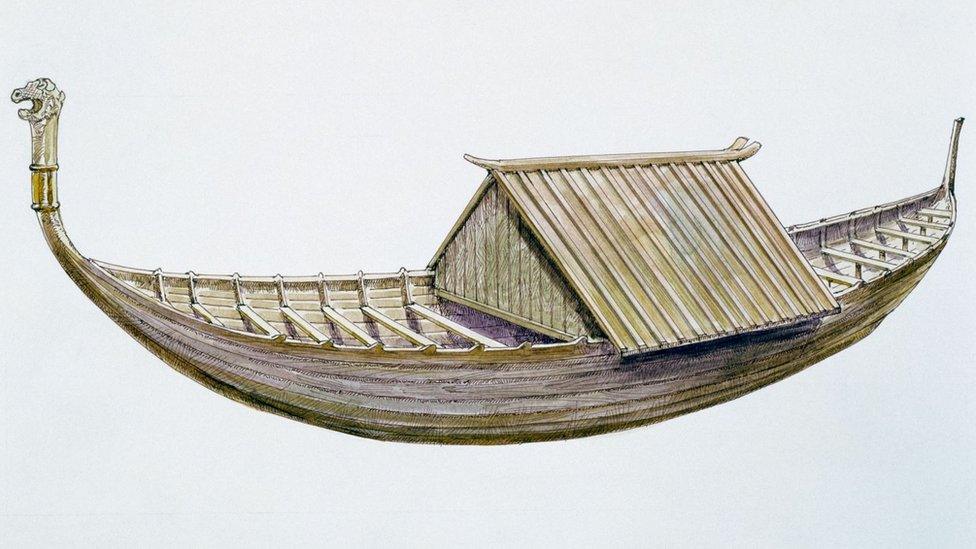The Dig: Pandemic delays Woodbridge Sutton Hoo replica ship build
- Published
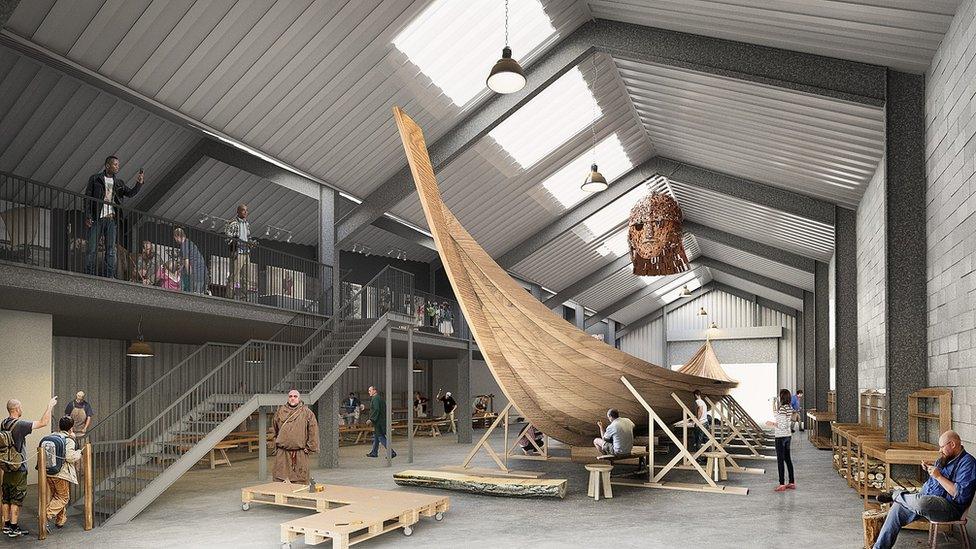
The Sutton Hoo Ship's Company wants to build a lifesize replica of the 1,400-year-old Anglo-Saxon ship
Volunteers hoping to create a replica of the Anglo-Saxon ship found at Sutton Hoo have had their schedule put back because of the pandemic.
The story of the ship's discovery in 1939 near Woodbridge, Suffolk, is explored in the hit Netflix film The Dig.
Two oak trees intended for the keel were delivered to the Sutton Hoo Ship's Company, external in January.
It had hoped to launch the seaworthy 90ft (27m) replica next year.
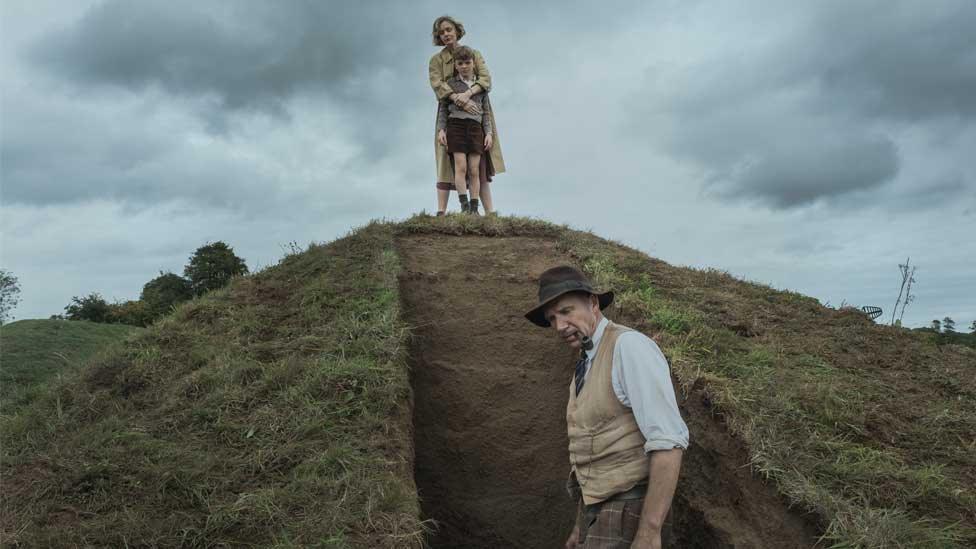
The Dig stars Carey Mulligan as Sutton Hoo landowner Edith Pretty and Ralph Fiennes as the archaeologist Basil Brown
Archaeologists, historians, shipbuilders and volunteers are behind the Sutton Hoo Ship's Company. In 2019 they launched a £1m campaign to fund a replica of the 1,400-year old ship, external.
Trustee Simon Steel said many of the volunteers have had to shield but some work had proceeded last year, including "a one-fifth scale model of the ship and a lifesize model of the middle section".
They are intended to help the volunteers, led by a shipwright and his trainee, to build the replica.
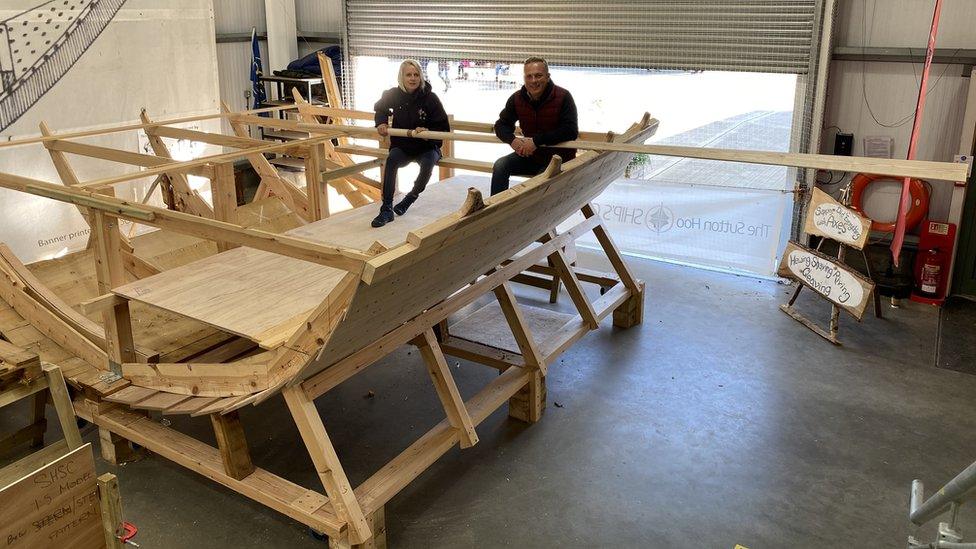
They have created a lifesize section of the ship to try to work out where to put its rowing floor. The finished ship needs 40 rowers and will stand 15 feet (5 metres) high
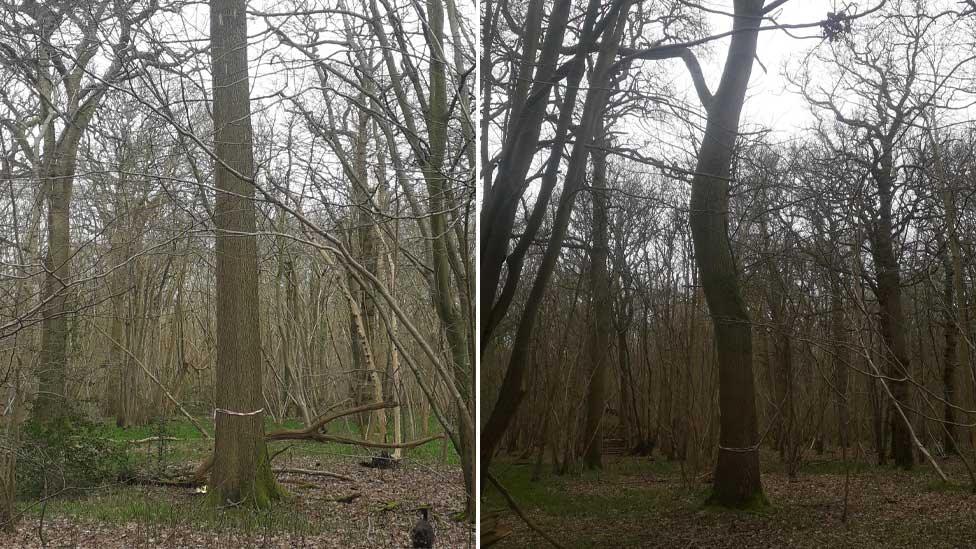
Two 180-year-old oak trees will form the replica's keel. Seven tonnes of green oak is needed to complete the ship
Mr Steel said: "The ship was buried without a rowing floor, so we're having to work out where we ought to place it - this is experimental archaeology."
The 180-year-old oak trees came from Forestry England, external land near Swindon in Wiltshire.
They are so large - the heaviest weighs about five tonnes (5,000kg) - that they are being stored outside Woodbridge and will need to be roughly cut to size using a chainsaw.
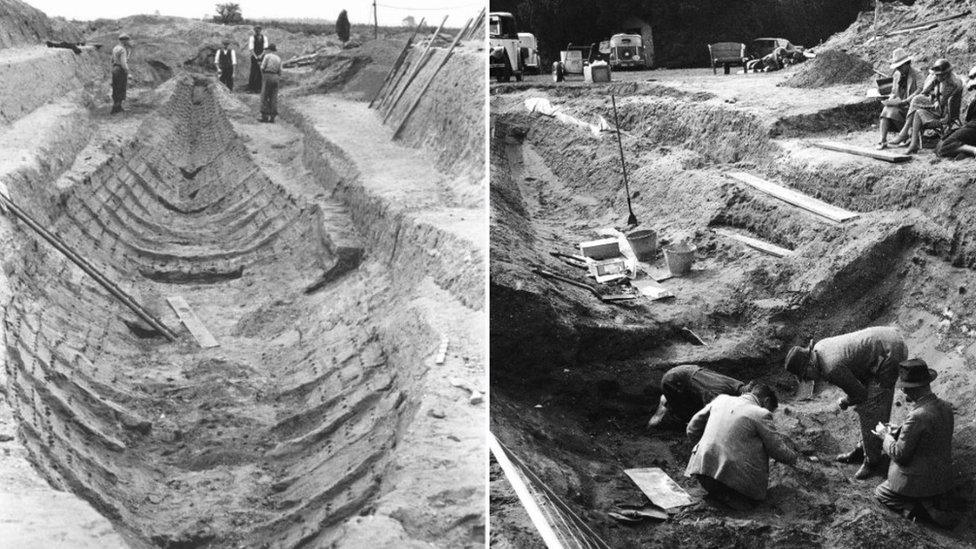
The outline of the ship was discovered in 1939. The wood had disappeared but its iron rivets remained
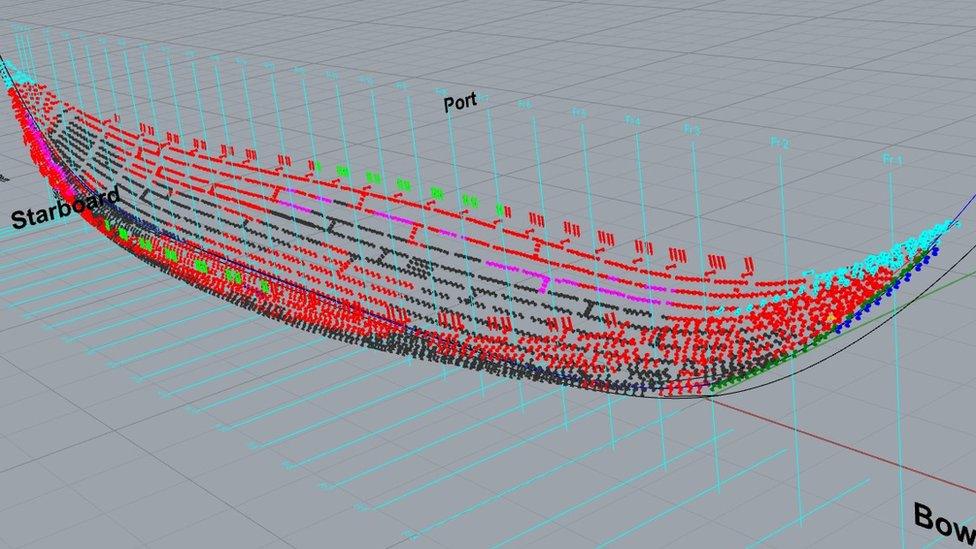
The volunteers plan to use copper rivets in their replica as they will last longer in sea conditions. They need 3,598 rivets
The keel pieces will then be taken to the town to be finished off using purpose-build Anglo-Saxon tools.
Mr Steel said: "There's no record of Anglo-Saxons having saws, so we will be splitting logs to make planks using an axe and wedges."
He hopes work on the ship's keel might begin at the end of March.
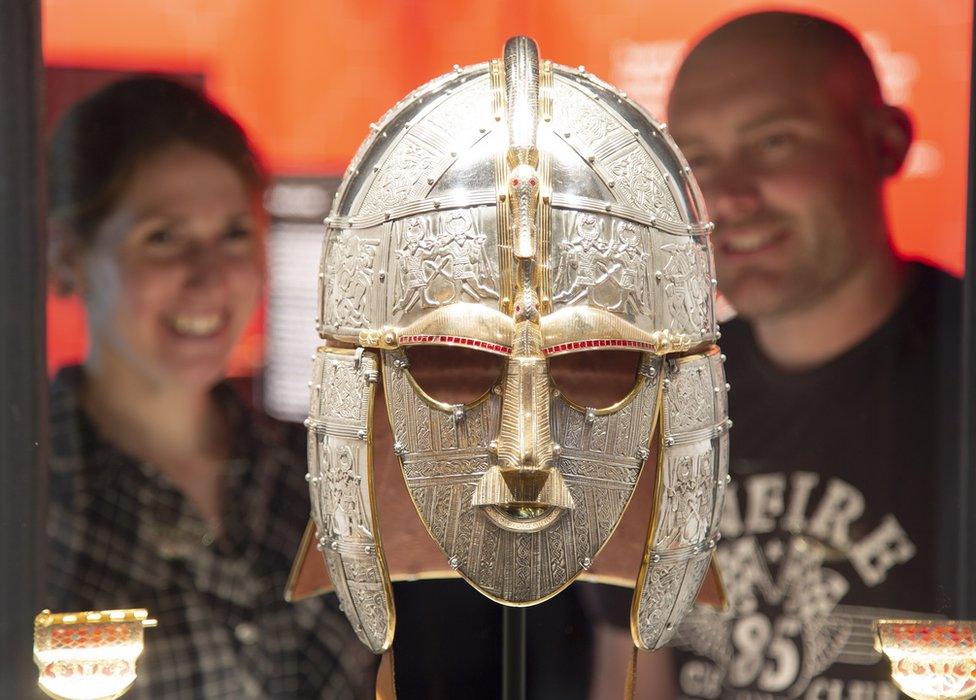
A replica of the helmet is at Sutton Hoo. The finds transformed historians' understanding of the Anglo-Saxon era

Find BBC News: East of England on Facebook, external, Instagram, external and Twitter, external. If you have a story to tell email eastofenglandnews@bbc.co.uk, external
Related topics
- Published2 February 2021

- Published30 January 2021
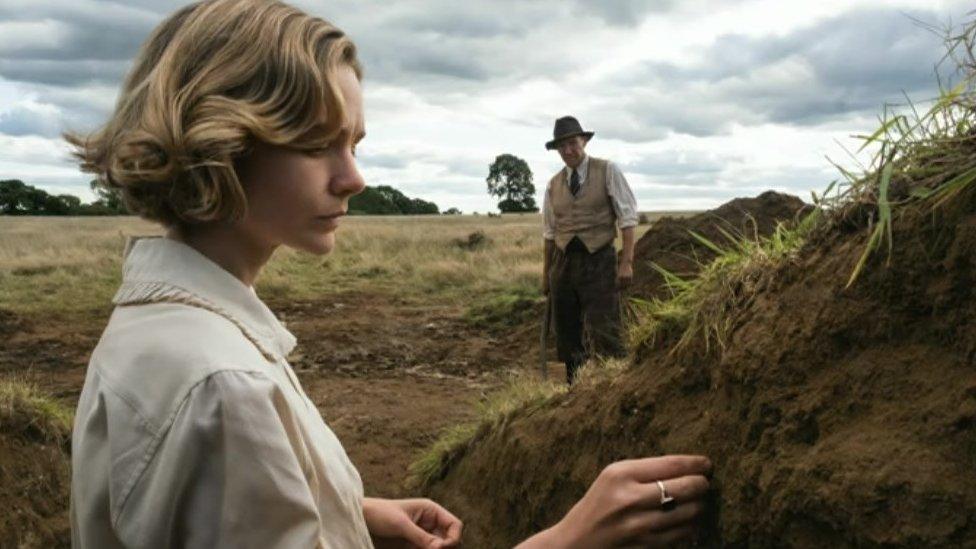
- Published17 January 2021
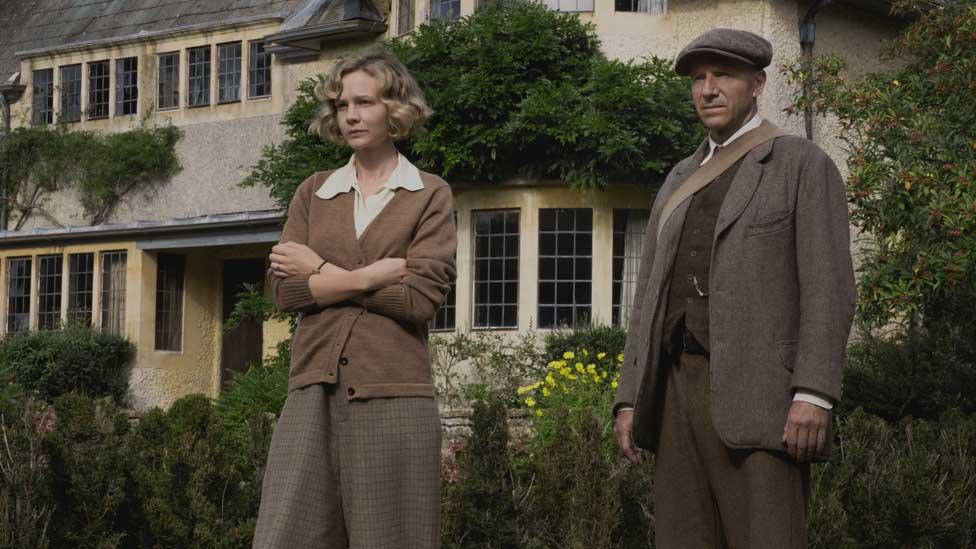
- Published7 August 2019
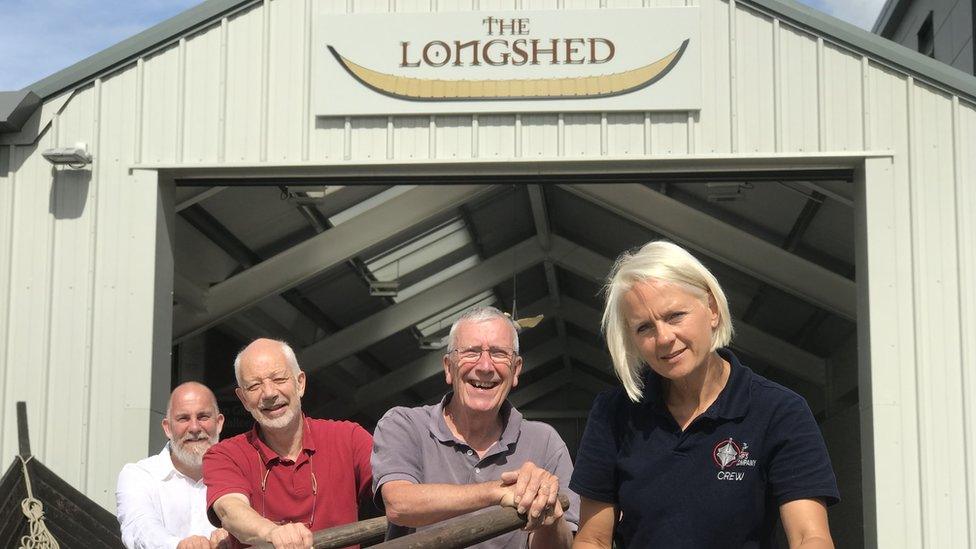
- Published19 April 2019
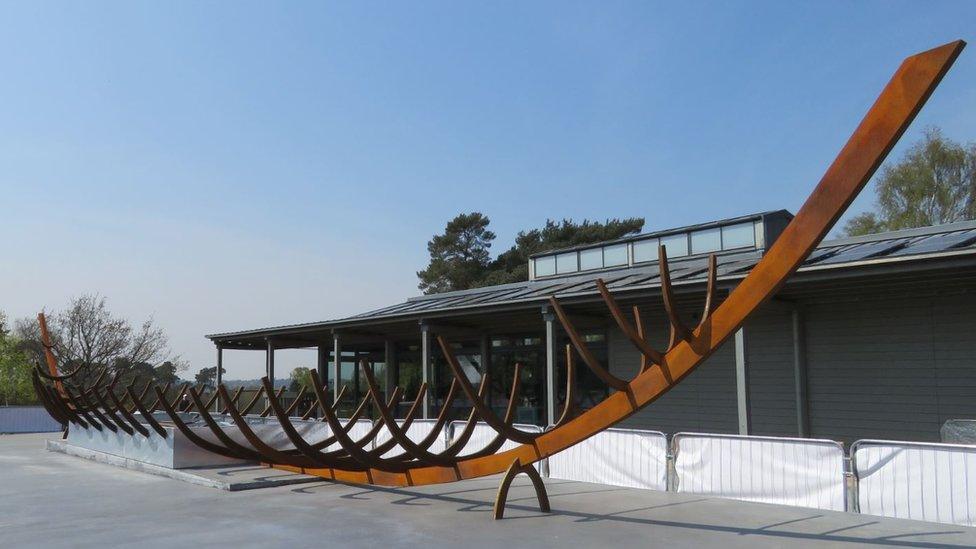
- Published29 May 2018
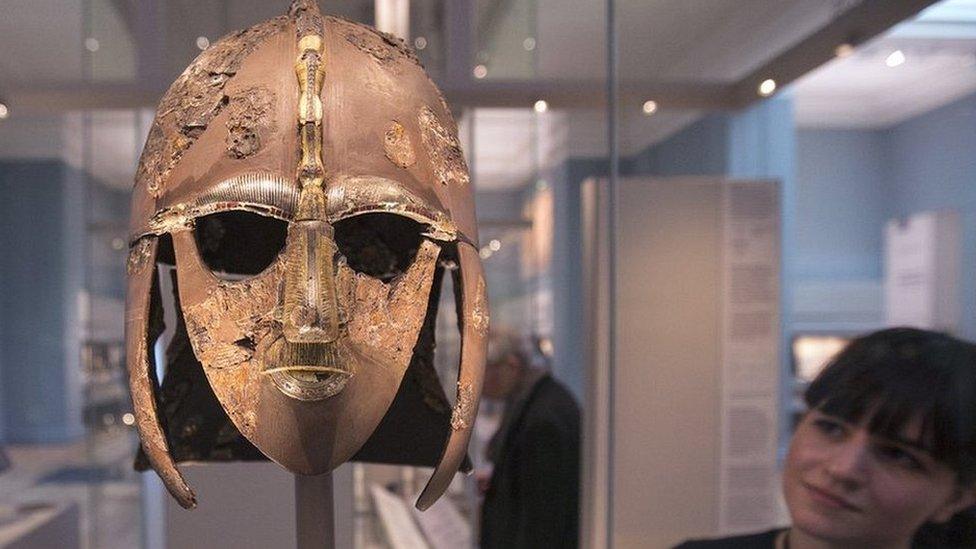
- Published7 April 2018
